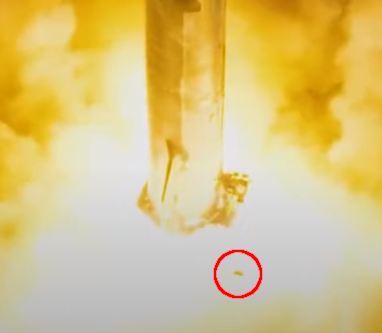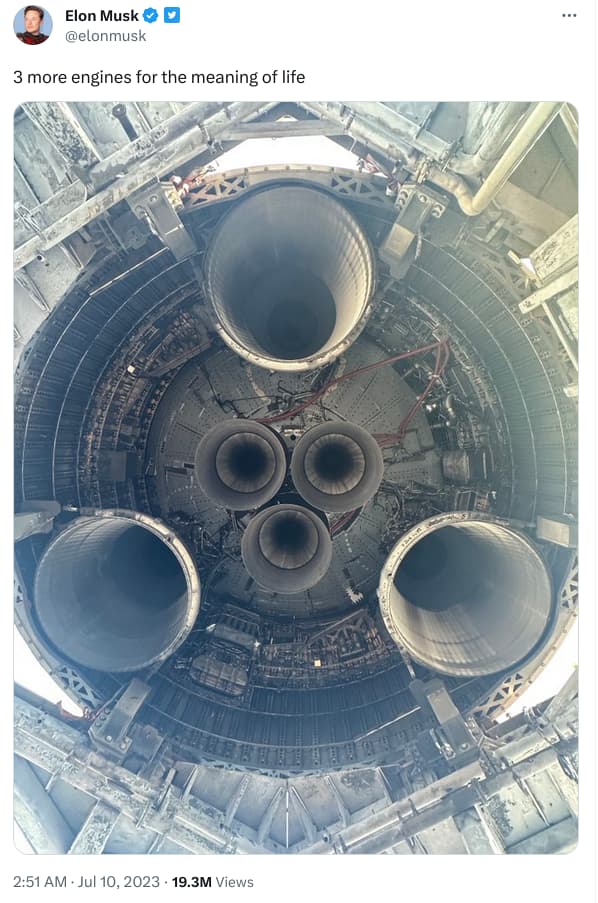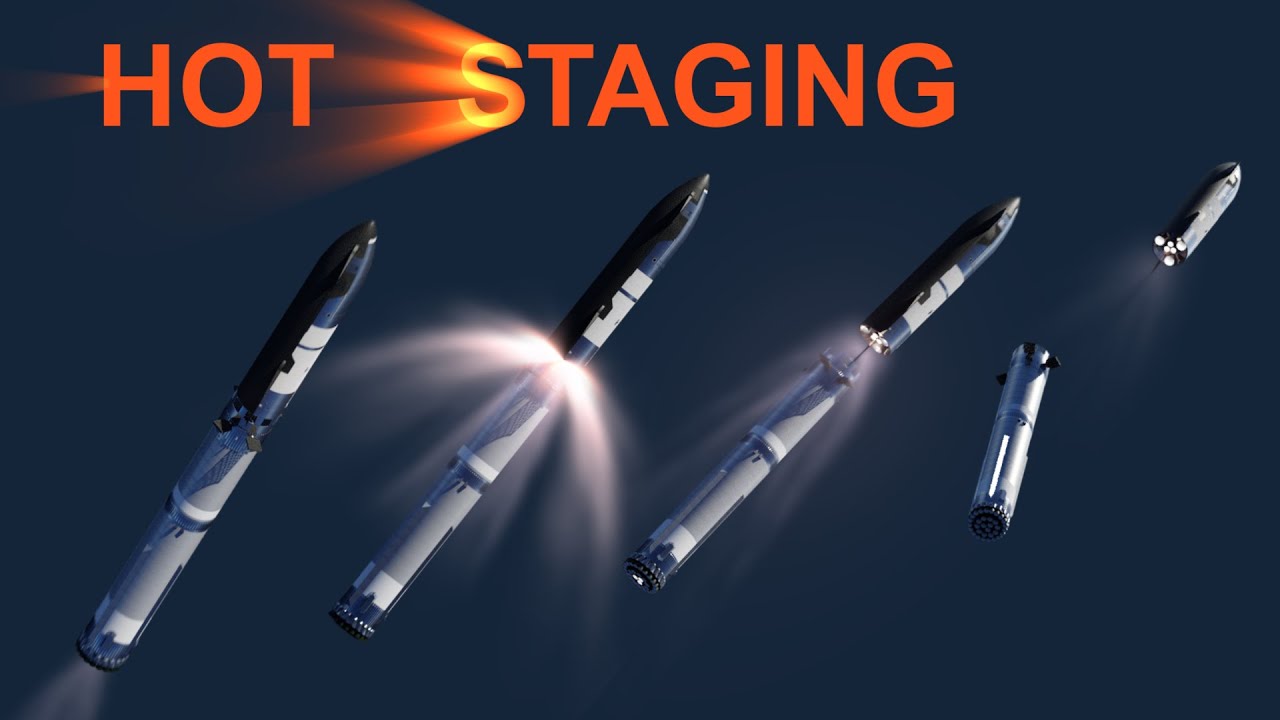On 2023-06-26 SpaceX conducted a six-engine static firing of Starship #25, the upper stage designated for the second orbital flight test.
In the first video in the main post, watch the slow motion of the static firing around 0:27. There’s what appears to be a fairly large piece of debris ejected along the 5 o’clock azimuth from the exhaust plume. It can be seen tumbling end over end until it falls back into the exhaust and dust plume. It seems to be following a ballistic trajectory and not deflected by the plume, so it appears to be reasonably massive.


33 engines on Super Heavy + 9 on upgraded Starship = 42 Raptors.
That’s a lot of raptors that will be lost in the orbital test.
In an online discussion with Bloomberg journalist Ashlee Vance on Twitter, the social media company [Elon] Musk owns, he said that SpaceX had recently decided to switch to a “hot-staging” approach where the Starship upper stage will ignite its engines while still attached to the Super Heavy booster.
“We made sort of a late-breaking change that’s really quite significant to the way that stage separation works,” Musk said, describing the switch to hot staging. “There’s a meaningful payload-to-orbit advantage with hot-staging that is conservatively about a 10% increase.”
Hot-staging, which has been used on Russian launch vehicles for decades, involves igniting the engines on one stage while still attached to its lower stage. Musk said that, for Starship, most of the 33 Raptor engines on the Super Heavy booster would be turned off, but a few still firing, when the engines on the Starship upper stage are ignited. Doing so, he said, avoids the loss of thrust during traditional stage separation, where the lower stage shuts down first.
Doing so requires some modifications to the Super Heavy booster. Musk said SpaceX is working on an extension to the top of the booster “that is almost all vents” to allow the exhaust from the upper stage to escape while still attached to the booster. SpaceX will also add shielding to the top of the booster to protect it from the exhaust.
Here is an animation of Starship performing the hot staging separation from Super Heavy. This shows the original six-engine Starship, not the upgraded nine-engine version planned for the future.
Hot staging, or “fire in the hole” stage separation, simplifies the stage separation process since there is no need for auxiliary “ullage rockets” or thrusters to settle propellants in the upper stage before lighting its engines. This saves weight and reduces complexity in the upper stage.
Hot staging is generally destructive of the lower stage and has never been attempted before on a reusable rocket. Here is film of the staging of a U.S. Titan II launcher, showing the upper stage engines blowing out skin panels of the first stage as they come up to full thrust.
Super Heavy components have been spotted with what appear to be cut-outs to allow Starship engine exhaust to escape during the stage separation operation. Whether Starship will light all of its engines initially when staging or just a limited number to separate the stages before igniting the others has not been disclosed.




